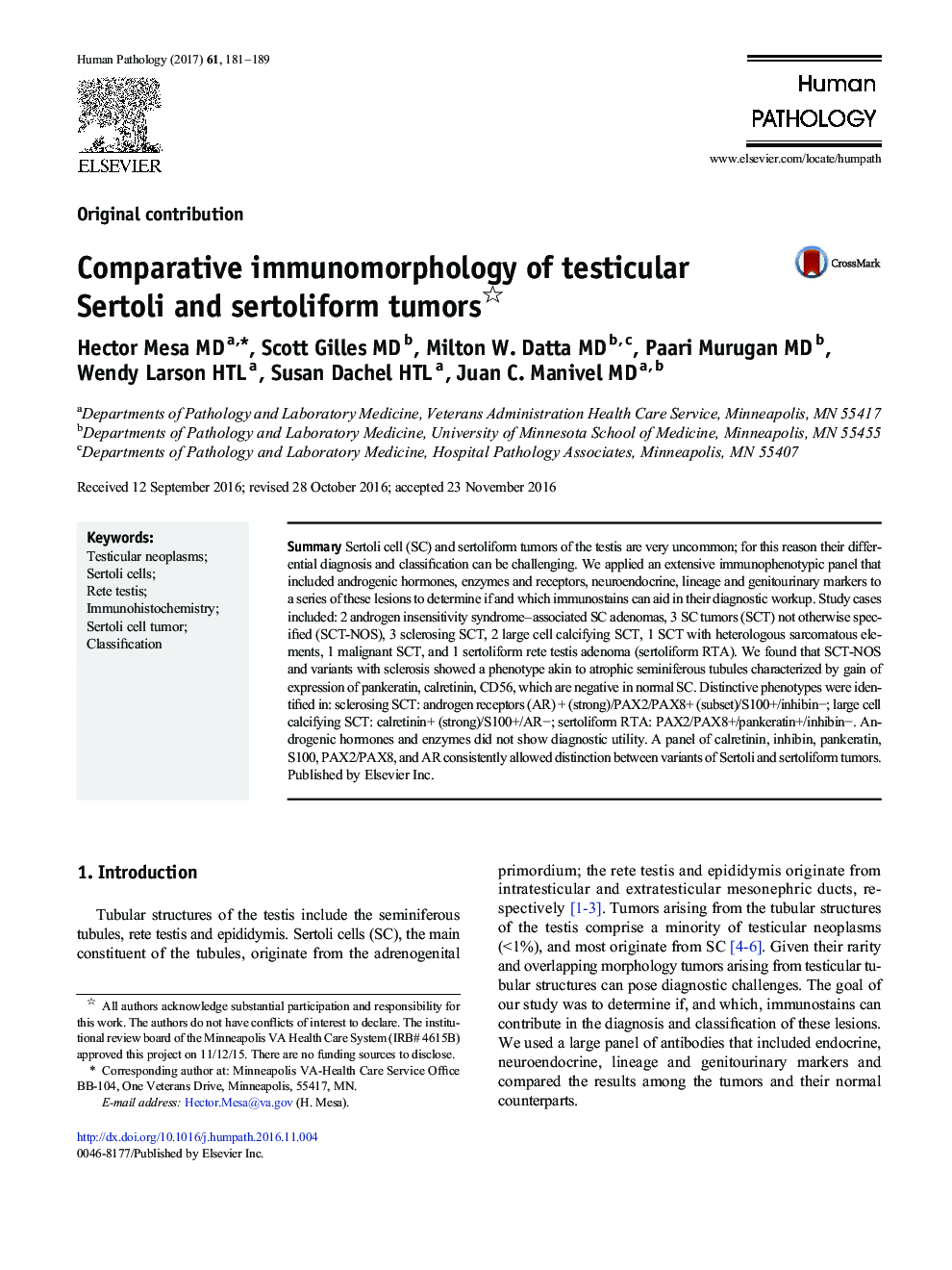| Article ID | Journal | Published Year | Pages | File Type |
|---|---|---|---|---|
| 5716369 | Human Pathology | 2017 | 9 Pages |
â¢Sertoli cell and sertoliform tumors of the testis are very uncommonâ¢Some Sertoli cell tumors resemble atrophic tubules by morphology and phenotypeâ¢Sclerosing Sertoli cell tumor variant shows a markedly different phenotypeâ¢Sertoliform rete testis adenoma mimics Sertoli tumors but stains like rete testisâ¢Immunohistochemistry is useful in the subclassification of Sertoli tumors
SummarySertoli cell (SC) and sertoliform tumors of the testis are very uncommon; for this reason their differential diagnosis and classification can be challenging. We applied an extensive immunophenotypic panel that included androgenic hormones, enzymes and receptors, neuroendocrine, lineage and genitourinary markers to a series of these lesions to determine if and which immunostains can aid in their diagnostic workup. Study cases included: 2 androgen insensitivity syndrome-associated SC adenomas, 3 SC tumors (SCT) not otherwise specified (SCT-NOS), 3 sclerosing SCT, 2 large cell calcifying SCT, 1 SCT with heterologous sarcomatous elements, 1 malignant SCT, and 1 sertoliform rete testis adenoma (sertoliform RTA). We found that SCT-NOS and variants with sclerosis showed a phenotype akin to atrophic seminiferous tubules characterized by gain of expression of pankeratin, calretinin, CD56, which are negative in normal SC. Distinctive phenotypes were identified in: sclerosing SCT: androgen receptors (AR) + (strong)/PAX2/PAX8+ (subset)/S100+/inhibinâ; large cell calcifying SCT: calretinin+ (strong)/S100+/ARâ; sertoliform RTA: PAX2/PAX8+/pankeratin+/inhibinâ. Androgenic hormones and enzymes did not show diagnostic utility. A panel of calretinin, inhibin, pankeratin, S100, PAX2/PAX8, and AR consistently allowed distinction between variants of Sertoli and sertoliform tumors.
